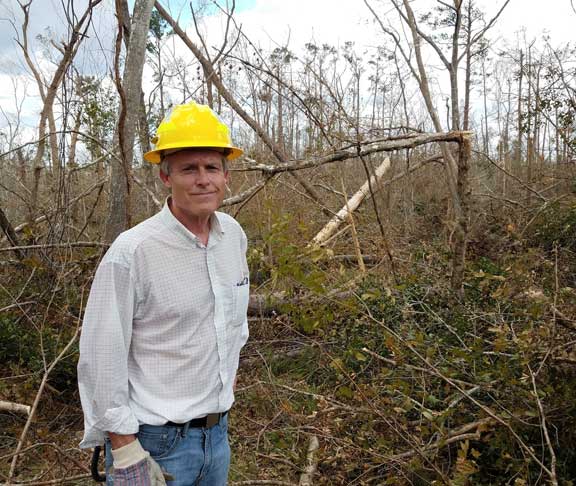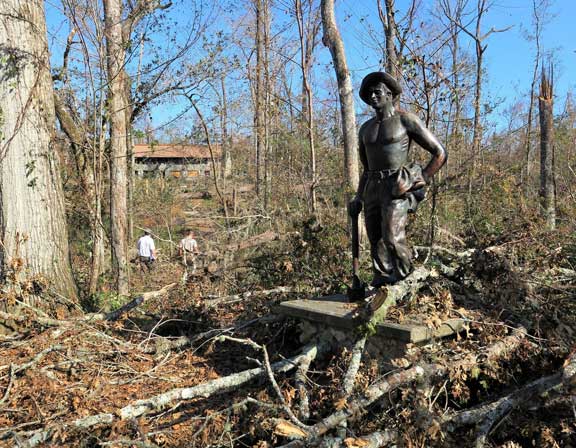On Oct. 10, 2018 the Florida Panhandle changed dramatically, and so did many of its state parks. Category 4 Hurricane Michael moved through the Panhandle, leaving a path of destruction in its wake.
“What some parks looked like before and how they look now is almost unbelievable,” Warren Poplin, bureau chief for state parks in Northwest Florida, said.
The hurricane damaged 31 parks throughout the Panhandle. Some parks had small amounts of debris and downed trees while others had major damage.
Florida Caverns State Park and Three Rivers State Park were in the path of the eye of the storm. Poplin estimates over 50 percent of the trees in each park’s dense forests were destroyed.
Three Rivers State Park Manager Phil Spyckaboer rode out the storm in the park residence. After the storm, Spyckaboer made contact with park service storm recovery teams to begin the cleanup.
“I have never seen anything like it,” Spyckaboer said. “Huge pine trees were pulled out by their roots like weeds. We got to work right away, making sure that all park staff were safe and assessing the damage.”
Torreya State Park and Falling Waters State Park also sustained major damage from fallen trees.
Coastal parks are especially vulnerable to hurricanes, although parks on barrier islands play an important role in protecting the mainland. St. Andrews State Park in Panama City Beach, just west of where the storm came ashore, was affected but has since been opened. Dr. Julian G. Bruce St. George Island State Park and T. H. Stone Memorial St. Joseph Peninsula State Park experienced powerful storm surge and remain closed as staff continue to assess conditions there.
“Through it all, it’s amazing to see the strength of the landscape and the enthusiasm of our staff in tackling the damage,” Poplin said. “Florida’s environment has recovered from many storms, and people are coming together to help each other out.”
Staff and volunteers are working hard to restore Florida State Parks in the Panhandle. Only seven of the 31 impacted parks remain closed.
A message from Florida State Parks director Eric Draper

After Hurricane Michael, I visited some of the impacted state parks to meet the people who are on the front lines of storm recovery and lend a hand. The storm was powerful, and full recovery depends on the effort of our staff, volunteers and supporters.
At Torreya State Park, I met Leo Sestini, a longtime volunteer who had come from his summer home in Pennsylvania when he heard about the storm. Our job was to clear a trail that had been completely covered by hundreds of large trees.
I was impressed with Leo’s determination and good cheer as he helped clean up fallen trees. The whole strike team, despite the heat and hard work, showed remarkable camaraderie that day. After considerable effort, we cleared a portion of trail and brought the park one step closer to normal.
I went home exhausted after just an afternoon at Torreya, but the team was out in the field again the next day. All over the Panhandle, staff and volunteers are continuing to do the tough work of recovery. They deserve our recognition and support, so I’m proud to share these stories and photos.
Volunteers like Leo and staff from other parks around the state are helping in part because many Panhandle staff were personally impacted or displaced by Hurricane Michael. Department of Environmental Protection employees who have lost homes and vehicles face a long road to recovery.
You can help by donating, volunteering and visiting. The Florida State Parks Foundation and the Florida Park Service Ranger Association are collecting funds to aid parks and the people who make them possible. Parks will need volunteers to assist in cleanup efforts. Show your support for the parks by visiting one of the more than 160 parks that are open. These include parks in the Panhandle, like Edward Ball Wakulla Springs, Camp Helen and Ponce de Leon Springs state parks.

